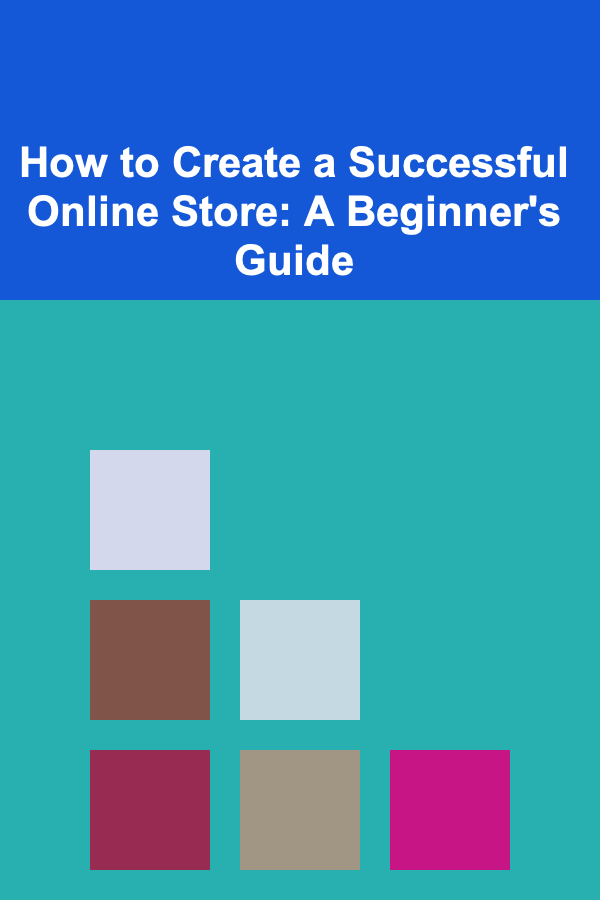
How to Use One-Page Websites to Increase Your Online Sales
ebook include PDF & Audio bundle (Micro Guide)
$12.99$9.99
Limited Time Offer! Order within the next:

In today's fast-paced digital world, businesses are continuously looking for new and innovative ways to increase their online sales. Among the myriad of strategies available, one that has gained significant attention is the use of one-page websites. While traditional multi-page websites have been the norm for many years, one-page websites offer a streamlined, user-friendly approach that can improve the customer experience and lead to higher conversion rates.
One-page websites are precisely what the name suggests: websites where all content is consolidated into a single, scrollable page. This design concept not only simplifies navigation but also creates a more focused, compelling user experience. This article will explore how one-page websites can be used effectively to boost online sales, the advantages they offer over multi-page sites, and the strategies you can implement to maximize their potential.
The Power of One-Page Websites
What is a One-Page Website?
A one-page website is a website that contains all the content on a single page, as opposed to the traditional approach of using multiple pages for different sections. Visitors scroll through the page to access various types of information, including text, images, videos, forms, and calls to action. These websites are designed to be minimalist, typically focusing on a singular goal, such as product promotion, event registration, or lead generation.
In the context of online sales, a one-page website is often used to showcase a single product, a service, or a campaign. Because of the simplicity of design, these websites are highly efficient in delivering targeted content without overwhelming the visitor. The streamlined nature of one-page websites also makes them ideal for mobile devices, where users often prefer a seamless and intuitive browsing experience.
Why Are One-Page Websites Effective for Online Sales?
- Simplicity and Focus: One of the most compelling reasons to use a one-page website is its focus on a single objective. Whether you're promoting a product, service, or campaign, a one-page website eliminates distractions by guiding the visitor's attention to the key message. This focused approach improves the chances of conversion because users are not sidetracked by irrelevant content or excessive navigation options.
- Improved User Experience: User experience (UX) is critical for online sales. One-page websites reduce friction by providing a smooth, uninterrupted browsing experience. Users don't have to click through multiple pages to find the information they need. The content flows naturally, encouraging users to engage more with the page and take action. In fact, research shows that websites with poor UX can result in a high bounce rate and lower conversion rates. A one-page website, by contrast, reduces the chances of users abandoning the site midway through their journey.
- Higher Mobile Conversion Rates: A significant portion of web traffic today comes from mobile devices. One-page websites are inherently more mobile-friendly because they are designed to load quickly and display cleanly on smaller screens. This makes them an excellent choice for businesses looking to maximize conversions on mobile platforms, where users are often looking for speed and convenience. A mobile-optimized one-page website can result in better user engagement and higher sales.
- Faster Load Times: Page load speed is a crucial factor in online sales. If a website takes too long to load, visitors may leave before even seeing your content. One-page websites tend to load faster than multi-page websites because they have fewer elements to process. With only one page to load, the site is optimized for speed, which is essential in reducing bounce rates and improving overall sales performance.
- Clear Calls to Action (CTAs): One-page websites allow you to place clear, concise calls to action (CTAs) throughout the page. Since there's no need for multiple pages, you can strategically position CTAs to guide users toward completing your desired goal. Whether it's making a purchase, signing up for a newsletter, or downloading a resource, these CTAs are visible and easy to act upon. This increases the likelihood of conversion and encourages users to take immediate action.
Benefits of One-Page Websites for Increasing Online Sales
Streamlined Conversion Funnel
One of the most important advantages of a one-page website is its ability to simplify the conversion funnel. The conversion funnel is the path users take from first encountering your website to completing a desired action (such as making a purchase). With a traditional multi-page website, this funnel can be convoluted, with multiple steps and opportunities for users to drop off before completing the transaction.
In contrast, a one-page website presents everything the visitor needs in one place, making it easier for them to follow the path to conversion. The design is intuitive, with elements arranged in a logical order that naturally guides the user toward the final CTA. By minimizing distractions and reducing the steps required to convert, a one-page website can help businesses achieve higher conversion rates.
Higher Engagement and Lower Bounce Rates
Engagement is critical for online sales, and one-page websites are designed to keep users engaged for longer periods. The continuous scroll of a one-page website allows for a more immersive experience, encouraging users to stay on the site and interact with the content. Furthermore, because all content is presented in one place, visitors are more likely to explore multiple sections of the website before deciding whether to purchase.
This reduced bounce rate, combined with the clear and concise messaging on a one-page website, helps to maintain a high level of engagement, which in turn boosts the likelihood of conversion. Visitors are more likely to stay on the page and take action when they don't have to navigate through multiple pages or search for the information they need.
Seamless Integration with Marketing Campaigns
A one-page website can be a powerful tool for complementing your online marketing campaigns. Whether you're running a social media ad, email marketing campaign, or search engine marketing (SEM) initiative, a one-page website can act as a focused landing page that supports your campaign's specific objective. When users click through to the website, they are immediately presented with the content and CTAs that align with the campaign, making it easier to convert.
For example, if you're running a limited-time sale campaign, a one-page website can feature a countdown timer, compelling product descriptions, and a CTA to encourage immediate purchases. This focused approach ensures that the website aligns with the marketing message, creating a cohesive experience for the user and increasing the chances of conversion.
Cost-Effective and Easy to Maintain
Building and maintaining a one-page website can be more cost-effective than creating a multi-page site. With fewer elements to design and develop, businesses can save on both the initial creation costs and the ongoing maintenance efforts. Furthermore, since the website only has one page, it requires less time and effort to update and optimize, making it an excellent choice for small businesses or those looking to create a focused online sales funnel without breaking the bank.
Better Analytics and Tracking
One-page websites offer more straightforward analytics and tracking, which is essential for understanding how your sales efforts are performing. Since all the content is located on a single page, it's easier to track user behavior and see where visitors are spending their time. Tools like Google Analytics can help you measure key metrics such as page views, bounce rates, conversion rates, and more.
These insights are valuable for refining your sales strategies. For example, if you notice that visitors drop off after reading product descriptions, you can adjust your messaging or CTA placement to improve conversions. With detailed data at your fingertips, you can continuously optimize your one-page website to maximize its impact on sales.
How to Optimize Your One-Page Website for Online Sales
1. Create a Compelling Value Proposition
The first thing visitors need to see when they land on your one-page website is a clear and compelling value proposition. This statement should answer the question: "Why should a visitor care?" Whether you're selling a product, offering a service, or promoting an event, make sure your value proposition is concise and compelling.
Your value proposition should highlight the main benefit of your product or service and explain why it is the best solution for your audience. For example, if you're selling an online course, you might emphasize how your course will help users achieve their goals faster and more effectively than other options. The value proposition should be the first thing users see when they land on your website, ideally placed in a prominent header section.
2. Use High-Quality Visuals
Visual content plays a key role in engaging users and driving conversions. High-quality images, videos, and infographics can help illustrate your product or service's benefits and make the website more visually appealing. Use images that showcase your product in use, highlight its features, and emphasize its value. Videos can be particularly effective, as they allow users to see the product in action or hear customer testimonials.
Make sure that your visuals are optimized for fast loading times, as slow-loading images can negatively impact your site's performance and conversion rates. Compress images and use responsive design techniques to ensure that your visuals look great on all devices.
3. Use Strong Calls to Action
Calls to action (CTAs) are a vital part of any one-page website. These buttons or links guide visitors toward taking the desired action, whether it's making a purchase, signing up for a newsletter, or downloading a resource. Make sure your CTAs are clear, concise, and visually prominent on the page.
Position your CTAs strategically throughout the page, ideally after introducing key information that encourages users to take action. For example, after a compelling product description, place a CTA like "Buy Now" or "Shop Today" to drive conversions. Use contrasting colors for your CTAs to make them stand out and ensure they're easy to spot.
4. Optimize for Mobile
With the majority of internet users now browsing on mobile devices, optimizing your one-page website for mobile is essential. Ensure that your website is responsive, meaning it adjusts automatically to fit the screen size of the device being used. Keep the layout simple and easy to navigate, with clickable buttons and CTAs that are easy to tap on mobile screens.
5. Build Trust with Social Proof
Social proof is a powerful psychological principle that can increase the likelihood of conversion. Testimonials, reviews, and case studies help to build trust with visitors by showing that other customers have had positive experiences with your product or service. Feature social proof prominently on your one-page website, such as including customer testimonials or displaying trust badges from reputable third-party sources.
6. Test and Optimize
Finally, it's essential to continuously test and optimize your one-page website. A/B testing, where you compare two different versions of the website to see which one performs better, can help you identify which design elements, CTAs, or content formats are most effective. Use analytics tools to track user behavior and adjust your website accordingly.
Conclusion
One-page websites are a highly effective tool for increasing online sales. They simplify the user experience, reduce distractions, and focus on delivering a seamless path to conversion. With their ability to streamline the sales funnel, improve user engagement, and optimize for mobile devices, one-page websites are becoming an increasingly popular choice for businesses looking to drive online sales.
By focusing on clear messaging, high-quality visuals, and strategic CTAs, businesses can create one-page websites that not only capture attention but also drive conversions. Through continuous testing and optimization, you can ensure that your one-page website remains a powerful tool for boosting online sales and achieving business success.

How to Create a Successful Online Store: A Beginner's Guide
Read More
How to Incorporate a Pressing Station in Your Sewing Room
Read More
How to Manage Pet Waste Effectively in Your Home
Read More
Maintenance Technician's Handbook: Techniques for Ensuring Operational Efficiency and Safety
Read More
How To Write a Strong Follow-Up Email After No Response
Read More
How To Explore Flash Loans and Their Risks
Read MoreOther Products

How to Create a Successful Online Store: A Beginner's Guide
Read More
How to Incorporate a Pressing Station in Your Sewing Room
Read More
How to Manage Pet Waste Effectively in Your Home
Read More
Maintenance Technician's Handbook: Techniques for Ensuring Operational Efficiency and Safety
Read More
How To Write a Strong Follow-Up Email After No Response
Read More